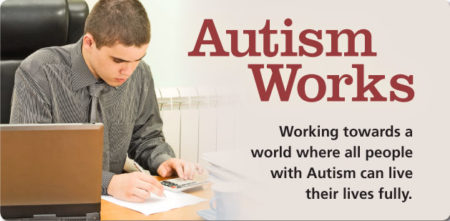 As part of Berkeley Lab’s efforts to increase awareness on Disability Employment Awareness Month in October, the Diversity, Equity, and Inclusion (DEI) Office and the All Access Employee Resource Group (ERG) will be hosting an autism awareness Brown Bag Lunch on Monday, October 30th from 12:00-1:00 p.m. at Pers Hall. This talk will cover information about the autism spectrum and the benefits of enhancing an organization’s neurodiversity; general tips for hiring managers interviewing applicants or working with colleagues on the spectrum; and success stories of companies who have participated in the Autism Advantage program.
As part of Berkeley Lab’s efforts to increase awareness on Disability Employment Awareness Month in October, the Diversity, Equity, and Inclusion (DEI) Office and the All Access Employee Resource Group (ERG) will be hosting an autism awareness Brown Bag Lunch on Monday, October 30th from 12:00-1:00 p.m. at Pers Hall. This talk will cover information about the autism spectrum and the benefits of enhancing an organization’s neurodiversity; general tips for hiring managers interviewing applicants or working with colleagues on the spectrum; and success stories of companies who have participated in the Autism Advantage program.
The goal of Autism Advantage is to further the ability of people on the spectrum to find gainful and integrated employment. The program achieves this goal through a two-pronged approach: 1) helping people harness their unique talents and realize their potential; and 2) creating high-performing organizations through the inclusion of this unique talent. This approach allows support for both candidates and employers in creating a more inclusive workforce. This talk will also discuss the benefits of the Autism Advantage program at SAP, including lessons learned and ways to ensure success. If you have any questions, please contact dio@lbl.gov.
Speaker Bio:
 Jack Hogan is a technology startup veteran and co-founder of the Autism Advantage Program, which trains applicants on the autism spectrum and matches them with leading companies. Participating companies with successful matches include Autodesk, Cisco, SAP, Visa, EY, and Microsoft. The Autism Advantage Program was developed out of Expandability’s highly successful Autism at Work program, which was first pioneered by software company, SAP. Hogan studied accounting at Menlo College in Atherton and is an avid Bay Area sports fan.
Jack Hogan is a technology startup veteran and co-founder of the Autism Advantage Program, which trains applicants on the autism spectrum and matches them with leading companies. Participating companies with successful matches include Autodesk, Cisco, SAP, Visa, EY, and Microsoft. The Autism Advantage Program was developed out of Expandability’s highly successful Autism at Work program, which was first pioneered by software company, SAP. Hogan studied accounting at Menlo College in Atherton and is an avid Bay Area sports fan.
*NOTE: CLICK HERE TO VIEW THE RECORDED PRESENTATION

I feel this is such an overlooked group in our society. I am coming to learn, and I am sure there is much I do not know about this axis of inclusion. When we think of inclusion, think of what we would want for our children–that can inform our attitudes and our work, and bring openness to all our interactions.